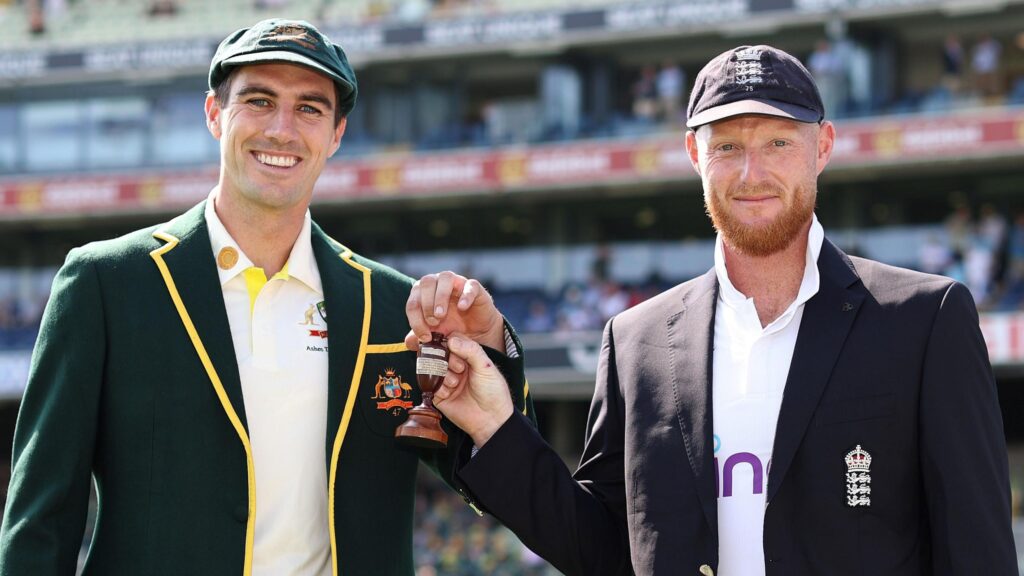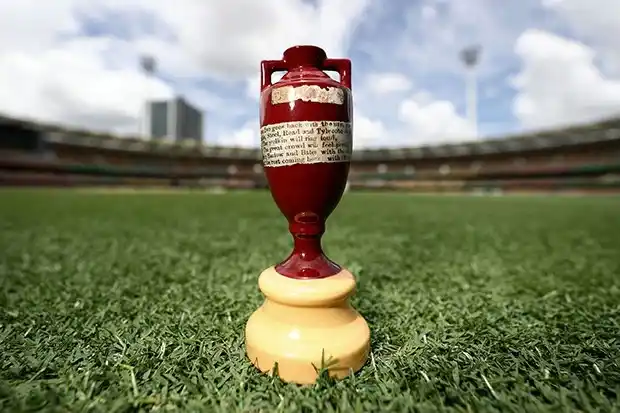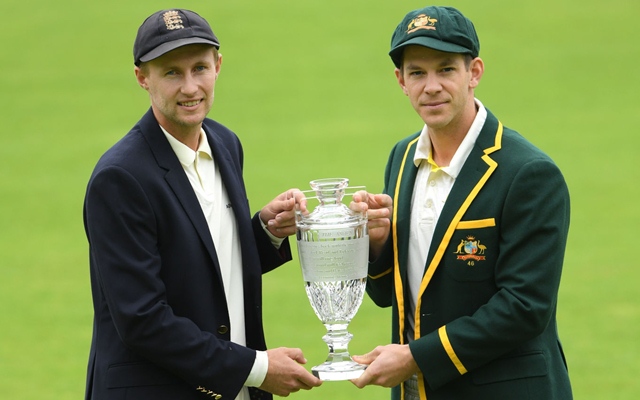Introduction
The Ashes series stands as one of the most iconic and enduring rivalries in the world of sports, particularly in cricket. Played between the national teams of England and Australia, this Test cricket series has captivated fans for over 140 years, blending fierce competition, dramatic moments, and a rich tapestry of history. The name “The Ashes” itself is steeped in legend, originating from a satirical obituary in a British newspaper following Australia’s shock victory over England in 1882. This article delves into the origins, evolution, key series, notable players, famous controversies, and statistical highlights of The Ashes, providing a detailed chronicle that spans from its inception to the present day.
At its core, The Ashes is more than just a cricket contest; it symbolizes the colonial ties, cultural clashes, and sporting excellence between two nations. Typically consisting of five Test matches played every two years, alternating between the two countries, the series has seen 73 editions as of 2023. Australia has emerged victorious in 34 series, retaining the urn six times through draws, while England has won 32 and retained it once. The total time each nation has held The Ashes reflects Australia’s slight edge: approximately 84.5 years for Australia compared to England’s 55.5 years.
The trophy, a small terracotta urn believed to contain the ashes of a burnt cricket bail, is not officially awarded but serves as a symbolic prize. Presented to English captain Ivo Bligh in 1883, it resides in the Marylebone Cricket Club (MCC) Museum at Lord’s Cricket Ground. Since 1998-99, a Waterford Crystal replica has been given to the winners.

Origins of The Ashes
The story of The Ashes begins in the late 19th century, when Test cricket was still in its infancy. The first official Test match between England and Australia was played in Melbourne in 1877, with Australia winning by 45 runs. However, the legendary moniker “The Ashes” emerged from the dramatic events of 1882.
In August 1882, at The Oval in London, Australia achieved their first Test victory on English soil. England, needing just 85 runs to win in their second innings, collapsed spectacularly. Australian fast bowler Fred “The Demon” Spofforth took 7/44, including the last four wickets for two runs, as England were bowled out for 77. The match ended with Ted Peate bowled by Harry Boyle, leaving England seven runs short. The stunned crowd eventually cheered the visitors, but the defeat sent shockwaves through English cricket circles.
The British press reacted with mock mourning. On September 2, 1882, The Sporting Times published a satirical obituary: “In Affectionate Remembrance of English Cricket, which died at the Oval on 29th August 1882. Deeply lamented by a large circle of sorrowing friends and acquaintances. R.I.P. N.B.—The body will be cremated and the ashes taken to Australia.” This whimsical piece captured the public’s imagination and set the stage for the rivalry’s name.
English captain Ivo Bligh, leading a tour to Australia in 1882-83, vowed to “recover those ashes.” The series consisted of three Tests, with England winning 2-1. During the tour, after victories in Melbourne and Sydney, a group of Melbourne ladies, including Bligh’s future wife Florence Morphy, presented him with a small urn containing the ashes of a burnt bail.
The urn, about 10.5 cm tall and possibly originally a perfume jar, became the symbolic trophy. A label on it quotes a verse from Melbourne Punch: “When Ivo goes back with the urn, the urn; Studds, Steel, Read and Tylecote return, return; The welkin will ring loud, The great crowd will feel proud, Seeing Barlow and Bates with the urn, the urn; And the rest coming home with the urn.”
Though the term faded briefly, it was revived in 1903 when Pelham Warner’s English team “regained the Ashes” in Australia. Since then, it has become synonymous with the series.
Early Years: 1880s to 1890s
The inaugural Ashes series in 1882-83 marked England’s dominance in the early era. Bligh’s team won the First Test in Melbourne by nine wickets, lost the Second in Sydney by an innings and 27 runs, and clinched the Third in Sydney by 69 runs. Key performers included Charles Studd with 48 in the decider and George Ulyett’s bowling.
England continued their supremacy through the 1880s, winning all seven series and losing only four of 23 Tests. The 1884 series in England saw Australia win the First Test at Old Trafford by an innings and five runs, but England bounced back with an innings victory in the Second at Lord’s and a draw in the Third at The Oval.
The 1884-85 series in Australia was a five-Test affair, with England winning 3-2. Billy Barnes starred with 134 in the Third Test. Australia’s first home Ashes win came in 1886-87, 2-1, thanks to Charlie Turner’s 30 wickets.
The 1890s were more competitive. Australia won 2-1 in 1891-92, with George Giffen’s all-round heroics. England responded with victories in 1893 (1-0), 1894-95 (3-2), and 1896 (2-1). The 1894-95 series featured one of cricket’s greatest comebacks: England, following on 261 runs behind in the First Test at Sydney, won by 10 runs after rain turned the pitch sticky. Bobby Peel took 6/67 in Australia’s second innings.
W.G. Grace, the era’s dominant figure, captained England to victory in 1896, scoring 170 in the First Test at Lord’s. Australia’s resurgence began in 1897-98 with a 4-1 win under Harry Trott.
Turn of the Century: 1900s to 1910s
The early 1900s saw Australia assert dominance under Joe Darling. The 1899 series in England ended 1-0 to Australia, with Victor Trumper’s debut century. In 1901-02, Australia won 4-1 at home, despite Reggie Duff’s century on debut.
The 1902 series is legendary for its drama. After two rain-affected draws, Australia won the Third at Sheffield by 143 runs and the Fourth at Old Trafford by three runs, chasing England’s target in a thriller. England won the Fifth at The Oval by one wicket, with Gilbert Jessop’s 104 in 75 minutes turning the game. George Hirst and Wilfred Rhodes added the last 15 runs unbroken.
Pelham Warner’s 1903-04 team regained the Ashes 3-2 in Australia, with Rhodes taking 31 wickets. England’s 1905 home series win (2-0) featured Stanley Jackson winning all five tosses.
Australia dominated 1907-08 (4-1) and 1909 (2-1). England’s 1911-12 tour saw a 4-1 win, with Jack Hobbs’ three centuries and Sydney Barnes’ 34 wickets.
The 1912 Triangular Tournament in England, including South Africa, saw England retain the Ashes despite Australia’s weakened side due to a player-board dispute.
World War I interrupted play, but post-war, Australia under Warwick Armstrong whitewashed England 5-0 in 1920-21 and won 3-0 in 1921.

Inter-War Period: 1920s to 1930s
The 1920s were Australia’s era, with fast bowlers Jack Gregory and Ted McDonald. England broke through in 1926, winning 1-0 in a rain-hit series. The Fifth Test at The Oval was timeless, with Jack Hobbs and Herbert Sutcliffe’s 172-run partnership on a sticky wicket securing victory.
In 1928-29, England won 4-1, with Wally Hammond scoring 905 runs at 113.12. The 1930 series saw Donald Bradman’s arrival, scoring 974 runs at 139.14, including 334 at Headingley. Australia won 2-1.
The 1932-33 “Bodyline” series is infamous. English captain Douglas Jardine employed leg-theory bowling with Harold Larwood and Bill Voce to counter Bradman. England won 4-1, but it sparked diplomatic tensions. Australian captain Bill Woodfull’s famous line to Plum Warner: “There are two teams out there; one is playing cricket, the other is not.” The controversy led to law changes banning intimidatory bowling.
Australia reclaimed the Ashes in 1934 (2-1), with Bradman and Bill Ponsford’s 451-run partnership at The Oval. Bradman captained from 1936-37, winning 3-2 after losing the first two Tests.
The 1938 series drew 1-1, with Len Hutton’s record 364 leading England to an innings and 579-run win at The Oval—the heaviest defeat in Test history.
Post-World War II: 1940s to 1950s
After WWII, Bradman’s Australia won 3-0 in 1946-47, with controversy over Bradman’s non-dismissal at 28. The 1948 “Invincibles” tour saw Australia win 4-0, unbeaten in 34 matches. They chased 404 at Headingley, with Bradman and Arthur Morris starring. Bradman’s final innings duck left his average at 99.94.
Australia continued dominance under Lindsay Hassett (4-1 in 1950-51). England broke through in 1953 (1-0), with Len Hutton captaining a strong side including Denis Compton and Alec Bedser.
In 1954-55, Frank Tyson’s pace helped England win 3-1. Jim Laker’s 19/90 in 1956 at Old Trafford secured a 2-1 win. Australia whitewashed 4-0 in 1958-59, with Richie Benaud’s 31 wickets.
The 1960s: Draws and Tactical Play
The 1960s were marked by draws, with only seven wins in 30 Tests. Australia won 2-1 in 1961, with Benaud’s 6/70 at Old Trafford. The 1962-63 series drew 1-1, and 1964 was 1-0 to Australia. The 1965-66 drew 1-1, 1968 drew 1-1, and England won 2-0 in 1970-71 under Ray Illingworth, with John Snow’s 31 wickets.
Attendance dropped due to defensive play by captains like Bill Lawry.
1970s to 1980s: Pace, Packer, and Botham
The 1972 series drew 2-2, England retaining. Australia’s Lillee and Thomson terrorized England in 1974-75 (4-1 win). England won 1-0 in 1975.
Kerry Packer’s World Series Cricket (1977-79) split the game. A weakened Australia lost 3-0 in 1977 and 5-1 in 1978-79 to England.
The 1981 “Botham’s Ashes” is legendary. After two losses, Ian Botham resigned as captain; Mike Brearley returned. At Headingley, England followed on 227 behind but won by 18 runs, with Botham’s 149* and Bob Willis’ 8/43. England won the series 3-1, with further heroics at Edgbaston and Old Trafford.
Australia won 2-1 in 1982-83, drew 1-1 in 1985, and England won 2-1 in 1985. Australia regained in 1986-87 (2-1) and dominated 4-0 in 1989.
1990s: Australian Hegemony
The 1990s belonged to Australia, winning six consecutive series. The 1990-91 series was 3-0 to Australia, 1993 was 4-1, 1994-95 3-1, 1997 3-2, 1998-99 3-1. Shane Warne’s “Ball of the Century” in 1993 dismissed Mike Gatting. Steve Waugh’s twin centuries in 1997 at Old Trafford turned the series.
England’s lone bright spot was the 1997 series start, winning the First Test, but losing 3-2.
2000s: Epic Battles and England’s Triumph
Australia continued dominance in 2001 (4-1), with Glenn McGrath’s 32 wickets. The 2002-03 was 4-1 to Australia, 2005 was England’s famous 2-1 win. The 2005 series featured Andrew Flintoff’s all-round brilliance, Kevin Pietersen’s debut, and dramatic finishes like Edgbaston (won by two runs) and Trent Bridge.
Australia whitewashed 5-0 in 2006-07, the last series for Warne, McGrath, and Justin Langer. England won 3-1 in 2009, with Flintoff’s five-wicket haul in his final Test. Australia won 3-0 in 2010-11, but England triumphed 3-1 in 2013, 3-2 in 2013-14 (Australia), and 3-2 in 2015 (England).
2010s to 2020s: Modern Rivalry
The 2013 series saw England win 3-0 at home. Australia retaliated 5-0 in 2013-14 with Mitchell Johnson’s pace. England won 3-2 in 2015, but Australia retained with a 4-0 win in 2017-18.
The 2019 series drew 2-2, with Steve Smith’s 774 runs despite a concussion. Australia won 4-0 in 2021-22. The 2023 series drew 2-2, Australia retaining after rain in the Fourth Test denied England a win.
As of 2025, Australia holds the Ashes, with the next series scheduled for 2025-26 in Australia.
Notable Players and Their Contributions
Donald Bradman
The greatest batsman ever, Bradman scored 5,028 runs in Ashes Tests at 89.78, with 19 centuries. His 974 runs in 1930 remain a record.
Shane Warne
The leg-spinner took 195 wickets in 36 Ashes Tests at 23.25. His flipper and guile tormented England.
Ian Botham
England’s all-rounder scored 1,481 runs and took 148 wickets. His 1981 heroics are legendary.
Jack Hobbs
“The Master” scored 3,636 runs at 54.26, with 12 centuries.
Harold Larwood
Bodyline spearhead, 33 wickets in 1932-33.
Other legends: Wally Hammond (2,515 runs), Len Hutton (2,428 runs), Dennis Lillee (167 wickets), Glenn McGrath (157 wickets), Alastair Cook (2,474 runs in modern era).
Famous Moments and Controversies
- 1882 Oval Defeat: Birth of the legend.
- 1902 Oval Thriller: Jessop’s century, one-wicket win.
- 1932-33 Bodyline: Diplomatic crisis.
- 1948 Headingley Chase: Invincibles’ record pursuit.
- 1956 Laker’s 19 Wickets: Unmatched feat.
- 1981 Headingley Miracle: Botham and Willis.
- 1993 Ball of the Century: Warne’s debut delivery.
- 2005 Edgbaston: Two-run win, Ponting’s rage at substitutes.
- 2019 Headingley: Ben Stokes’ unbeaten 135 chases 359.
Controversies include throwing accusations (1958-59), d’Oliveira affair (though not Ashes), and ball-tampering (2018, affecting post-series relations).
Records and Statistics
Team Records
- Highest total: Australia 729/6d (1938, The Oval).
- Lowest total: Australia 36 (1902, Edgbaston).
- Biggest win: England innings and 579 runs (1938).
- Most wins: Australia 142 Tests, England 110, 93 draws (out of 345 Tests as of 2023).
Batting Records
- Most runs: Bradman 5,028.
- Highest score: Hutton 364 (1938).
- Most centuries: Bradman 19.
Bowling Records
- Most wickets: Warne 195.
- Best figures: Laker 10/53 and 9/37 (19/90 in 1956).
- Best match: Laker 19/90.
Fielding and All-Round
- Most catches: Border 39 (non-keeper).
- Most dismissals: Ian Healy 119.
Modern records: Smith 2,042 runs since 2013, James Anderson 149 wickets.
The Ashes Winners: Last 25 Years (2000–2025) with Captains
Below is a table listing the winners of The Ashes series from 2000 to 2025, including the year (denoting the English cricket season or primary host year), host country, winning team, series result, and the captains of both teams. The data covers 13 completed series, with Australia winning or retaining the Ashes in 8 series and England winning 5. Draws result in the previous holder retaining the urn. The 2025-26 series is yet to be played as of October 18, 2025.

| Year | Host | Winner | Result (Tests Won) | England Captain | Australia Captain | Key Highlights |
|---|---|---|---|---|---|---|
| 2001 | England | Australia | 4–1 | Nasser Hussain | Steve Waugh | Australia’s eighth consecutive series win; Glenn McGrath’s 32 wickets. Ended with 7-wicket win at The Oval. |
| 2002–03 | Australia | Australia | 4–1 | Nasser Hussain | Steve Waugh | Australia dominated; Justin Langer and Matthew Hayden’s opening partnerships. England won Sydney Test. |
| 2005 | England | England | 2–1 | Michael Vaughan | Ricky Ponting | Iconic 2005 series; Andrew Flintoff’s all-round heroics, Kevin Pietersen’s debut century. 2-run win at Edgbaston. |
| 2006–07 | Australia | Australia | 5–0 | Andrew Flintoff | Ricky Ponting | Australia’s whitewash; final series for Shane Warne, Glenn McGrath, Justin Langer. 10-wicket win at Sydney. |
| 2009 | England | England | 2–1 | Andrew Strauss | Ricky Ponting | Flintoff’s farewell Test; Graeme Swann’s 26 wickets. Rain-affected draws helped England. |
| 2010–11 | Australia | England | 3–1 | Andrew Strauss | Ricky Ponting | Alastair Cook’s 766 runs; England’s first Down Under win since 1998-99. Anderson and Swann starred. |
| 2013 | England | England | 3–0 | Alastair Cook | Michael Clarke | England’s whitewash; Stuart Broad’s 25 wickets. Australia’s batting struggled. |
| 2013–14 | Australia | Australia | 5–0 | Alastair Cook | Michael Clarke | Mitchell Johnson’s 37 wickets; Australia’s emphatic response to 2013 loss. Whitewash at Sydney. |
| 2015 | England | England | 3–2 | Alastair Cook | Michael Clarke | Ben Stokes’ emergence; Joe Root’s 460 runs. England chased 412 at Edgbaston. Clarke’s final series. |
| 2017–18 | Australia | Australia | 4–0 | Joe Root | Steve Smith | Steve Smith’s 687 runs; ball-tampering scandal loomed post-series. Australia retained urn. |
| 2019 | England | Australia (retained) | 2–2 (drawn) | Joe Root | Tim Paine | Steve Smith’s 774 runs post-ban; Jofra Archer’s debut. Rain saved Australia at Old Trafford. |
| 2021–22 | Australia | Australia | 4–0 | Joe Root | Pat Cummins | Pat Cummins’ first series as captain; England struggled with depleted squad. Hobart Test sealed series. |
| 2023 | England | Australia (retained) | 2–2 (drawn) | Ben Stokes | Pat Cummins | “Bazball” era; Ben Stokes’ 155* at Lord’s, 108* at Oval. Usman Khawaja’s 496 runs; rain at Manchester saved Australia. |
Evolution of the Game in The Ashes
The series has mirrored cricket’s changes: from timeless Tests to five-day limits, uncovered pitches to covered, Bodyline laws to DRS (Decision Review System) introduction in 2009. Attendance and viewership peaked in 2005 with over 8 million UK viewers for the finale.
Women’s Ashes began in 1934, with multi-format series since 2013, but this article focuses on the men’s.
Cultural Impact
The Ashes transcends sport, influencing literature (e.g., Warner’s book), film (Bodyline miniseries), and national identity. Rivalries like Jardine-Bradman or Flintoff-Ponting add spice.
Conclusion
The Ashes remains cricket’s pinnacle, a testament to endurance, skill, and passion. From 1882’s satirical origins to 2023’s dramatic draw, it has produced heroes, villains, and unforgettable drama. As the 2025-26 series approaches, the rivalry endures, promising more chapters in this storied history.




